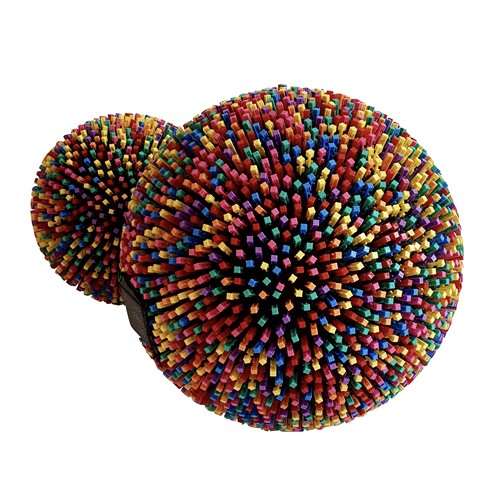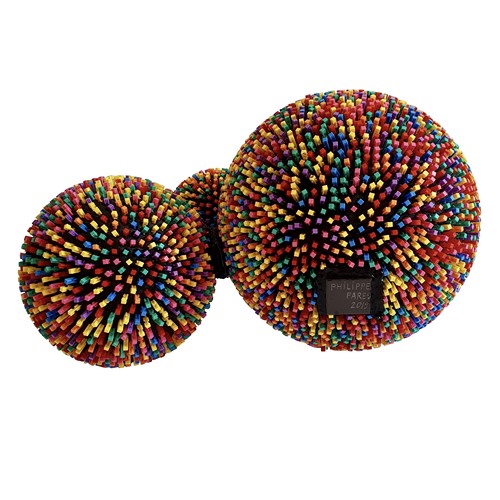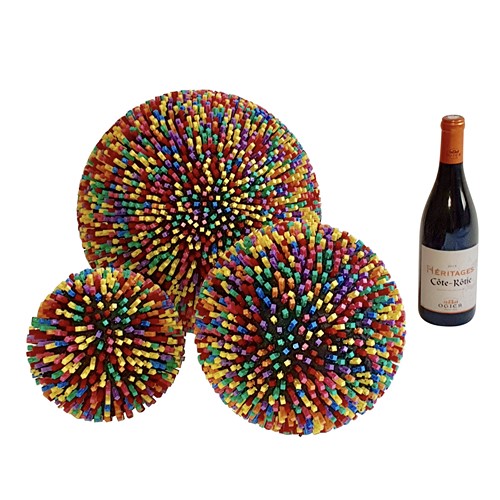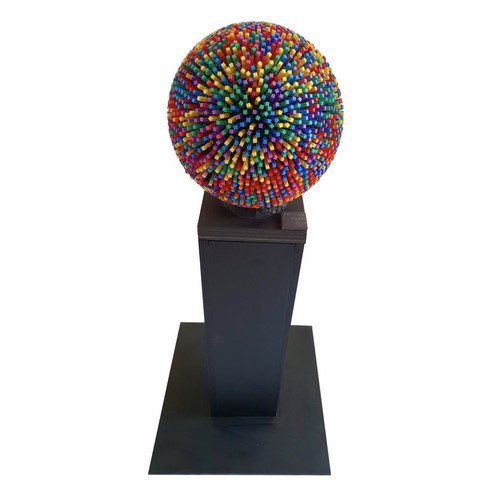3-Sphere
2019
The set of points equidistant from a central point, in a space 4
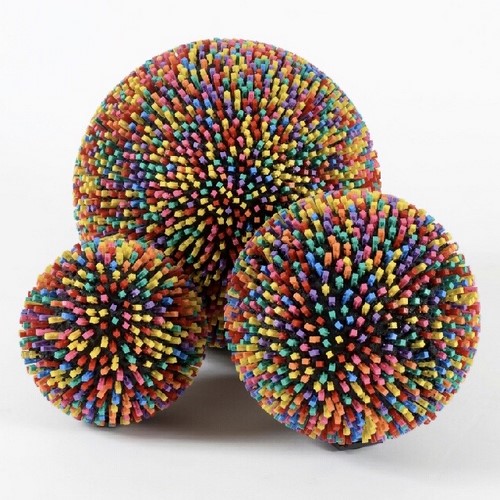
These three spheres have different diameters (15, 23 and 32 cm) and are isostatically assembled by two cement bonds. The whole rests on three points which form a tangent plane to the three convex solids of revolution.
According to Euclid: “A solid is that which has length, width and depth, and the limit of a solid is a surface.”
We know that a 3-sphere is the set of points equidistant from a central point, in a four-dimensional space. Philippe Fares has imagined that the three elements would find their immaterial appearance in a hypermetric landmark where the fourth dimension would be the color.
For that, he used colored lancets that he juxtaposed on the surface of the balls, according to a random and regular micro-paving. The colored points thus formed cannot be discerned from each other beyond a certain distance. They blend optically with each other.
Technical
Cement, Polyethylene
Dimensions
Length 60cm
Height 35cm
Depth 44cm
Divisionism in 3D

The discrete distribution of the colors becomes then continuous. One can consider that this is a form of divisionism in 3D.
Furthermore, the organized distribution of colored points create a kinetic effect depending on the position where the work is observed.
We can notice that the closer the colored points are to each other, the more the three solids tend towards a perfect approximation of the sphere. By the same token, we observe a pixelization effect of the object as a whole.
It should also be noted that the chromatic field that colors the spheres corresponds to most of the visible spectrum of natural light; only the black and white hues are missing. The choice of this system gives the work a great saturation, and the wide variety of colors stimulates the sensitivity of the three types of cones of the human eye.


